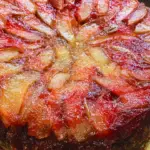However, this recipe has a twist, unlike the original Tiramisu made with ladies’ fingers (saviardi) this recipe is made with sponge fingers and this gives it more of a sponge cake texture.
Ingredients:
- 3 packs of sponge fingers
- 1 1/2 cups strong brewed coffee or espresso, cooled
- 4 large eggs, separated
- 2tbsp caster sugar
- 250gms mascarpone cheese
- 1x pot of double cream whipped
- 1/4 cup unsweetened cocoa powder
- 1/4 cup rum or Marsala wine (optional)
Instructions:
- Separate the egg yolks from the whites. In a large mixing bowl, whisk the egg yolks with 3/4 cup of sugar over hot water until creamy and pale in color do not allow it to curdle (take off the heat and stir if necessary.
- Allow it to cool then fold in the mascarpone cheese and whipped cream into the egg yolk mixture.
- Pour the cooled coffee or espresso into a shallow dish. Dip each sponge finger into the coffee quickly, allowing it to absorb some of the liquid but not become too soggy.
- Arrange a single layer of soaked sponge fingers in a 9×13-inch baking dish or in individual serving glasses.
- Spread half of the mascarpone mixture over the soaked ladyfingers.
- add another layer of soaked sponge fingers and add the remainder of the egg mixture
- Dust the mascarpone layer with cocoa powder using a fine-mesh sieve.
- If desired, drizzle rum or Marsala wine evenly over the top of the final layer.
- Cover the tiramisu with plastic wrap and refrigerate for at least 4 hours, or preferably overnight, to allow the flavors to meld and the dessert to set.
- Just before serving, dust the top of the tiramisu with more cocoa powder for a finishing touch.
- Slice and serve the tiramisu chilled, and enjoy the heavenly combination of flavors and textures!
Note: Tiramisu can be stored in the refrigerator for up to 2-3 days, but it’s best to consume it within 24-48 hours for optimal taste and texture.
Tiramisu is a heavenly dessert that is sure to please anyone with its rich and indulgent taste. With a few simple steps, you can create a homemade tiramisu that will impress your guests and satisfy your sweet tooth. Buon appetito!

Some of my articles may contain affiliate links, which means I earn a small commission at no extra cost to you but it does help me with the running costs. As an Amazon Associate, I will earn commissions on purchases but this does not affect my reviews on products or services.
Questions and answers:
Does all Tiramisu have raw eggs in it?
Tiramisu is a popular Italian dessert that is known for its rich and creamy layers of coffee-soaked ladyfingers and mascarpone cheese. One question that often comes up when discussing tiramisu is whether it contains raw eggs.
Traditionally, tiramisu does indeed contain raw eggs, specifically egg yolks. The egg yolks are typically mixed with sugar and beat until thick and creamy, forming a luscious base for the mascarpone cheese. However, it’s important to note that egg yolks are not cooked in the traditional tiramisu recipe but are sometimes cooked over boiling water with the sugar in some recipes (always best to ask).
Raw eggs can pose a risk of foodborne illness, as they may contain bacteria such as Salmonella. Consuming raw eggs can be particularly dangerous for pregnant women, elderly individuals, and those with weakened immune systems. Therefore, some people may be concerned about the use of raw eggs in tiramisu.
However, many traditional tiramisu recipes call for using very fresh, high-quality eggs to reduce the risk of contamination. Additionally, the use of raw eggs in tiramisu is relatively low-risk, as the eggs are mixed with other ingredients and not left raw for an extended period of time. The alcohol and coffee used in tiramisu also act as a preservative, further reducing the risk of bacterial growth.
For those who are concerned about using raw eggs in tiramisu, there are alternative methods. Some recipes suggest using pasteurized eggs or egg substitutes that are safe to consume raw. Others recommend cooking the egg yolks in a double boiler until they reach a safe temperature, then proceeding with the recipe.
In conclusion, tiramisu traditionally contains raw eggs, but there are alternatives for those who prefer to avoid consuming raw eggs. It’s important to use fresh, high-quality eggs and follow safe food handling practices to minimize the risk of foodborne illness. If you have concerns, it’s always best to consult a trusted recipe or seek guidance from a qualified culinary professional.
Why can’t you eat tiramisu when you are pregnant?
One of the main reasons why pregnant women are often advised to avoid tiramisu is the risk of foodborne illness from raw eggs. Raw eggs can potentially harbor harmful bacteria such as Salmonella, which can cause food poisoning. During pregnancy, a woman’s immune system undergoes changes, making her more susceptible to foodborne infections. In severe cases, foodborne illness during pregnancy can pose risks to both the mother and the developing baby, including premature birth, low birth weight, and other complications.

Another ingredient in tiramisu that raises concern during pregnancy is alcohol. Some traditional tiramisu recipes call for the use of alcohol, such as Marsala wine, rum, or coffee liqueur, which is used to soak the ladyfingers. Alcohol consumption during pregnancy can have harmful effects on fetal development and has been linked to birth defects and developmental delays.
Related posts:
- Tiramisu sponge cake beyond delicious

- Best carrot cake recipe 2023 quick easy & delicious

- Best apple sponge cake moist and delicious


